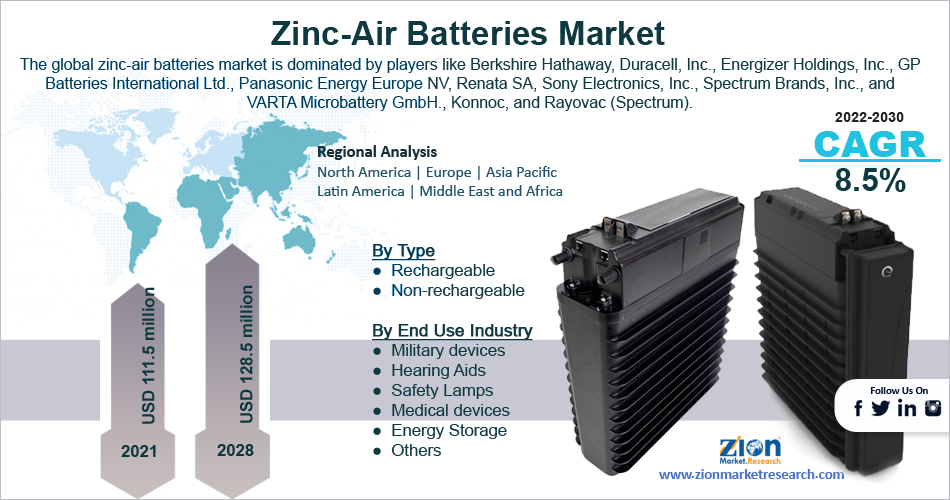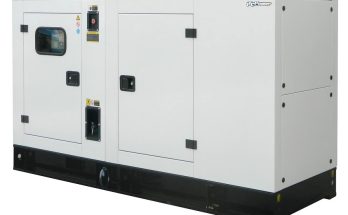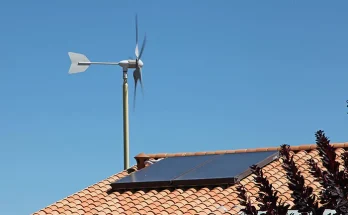Zinc-Air Batteries:
Zinc-air batteries are a type of primary (non-rechargeable) battery that uses zinc as the anode and oxygen from the air as the cathode. They have a high energy density and can be used in a variety of applications, including portable electronic devices, backup power systems, and electric vehicles.
One of the key benefits of zinc-air batteries is their high energy density, which refers to the amount of energy that can be stored in a given volume. This makes them an attractive option for use in applications where space is limited, such as portable electronic devices and electric vehicles. They also have a relatively low cost compared to other types of batteries.

Zinc-air batteries work through a chemical reaction between the zinc anode and the oxygen in the air. As the battery discharges, zinc is oxidized at the anode and oxygen is reduced at the cathode, generating electricity. The battery is recharged by replacing the spent zinc anode with a fresh one.
There are two main types of zinc-air batteries: alkaline and galvanic. Alkaline zinc-air batteries use an alkaline electrolyte, which allows for higher current densities and longer shelf life. Galvanic zinc-air batteries use a galvanic electrolyte, which allows for higher energy densities but shorter shelf life.
Zinc-Air Batteries Market Analysis
According to the Zion Market Research the global zinc-air batteries market was worth USD 111.5 million in 2021 and is expected to rise to USD 128.5 million by 2030 at a CAGR of 8.5%.
The market for zinc-air batteries is expected to grow in the coming years due to increasing demand for energy storage solutions and the growing adoption of electric vehicles. Zinc-air batteries have several advantages over other types of batteries, including their high energy density, low cost, and long shelf life, which make them a competitive option for various applications.
One of the main drivers of the zinc-air battery market is the increasing adoption of electric vehicles (EVs). Zinc-air batteries have a high energy density and can be used to extend the range of EVs, making them an attractive option for use in these applications. The growing demand for EVs, particularly in China and Europe, is expected to drive the market for zinc-air batteries in the coming years.
Other factors that are expected to contribute to the growth of the zinc-air battery market include the increasing demand for energy storage solutions for renewable energy systems, such as solar and wind power, and the growing adoption of portable electronic devices, such as smartphones and laptops.
Overall, the market for zinc-air batteries is expected to experience significant growth in the coming years due to increasing demand for energy storage solutions, the growing adoption of EVs, and the trend towards more sustainable and environmentally-friendly energy solutions.
Zinc-Air Batteries Market Future Growth Factors
- Increasing demand for energy storage solutions: The increasing adoption of renewable energy sources, such as solar and wind power, is driving the demand for energy storage solutions. Zinc-air batteries have a high energy density and can be used for energy storage in a variety of applications, including backup power systems and electric vehicles.
- Growing adoption of electric vehicles: The growing demand for electric vehicles (EVs) is expected to drive the market for zinc-air batteries. Zinc-air batteries have a high energy density and can be used to extend the range of EVs, making them an attractive option for use in these applications.
- Government incentives and regulations: Governments around the world are implementing incentives and regulations to encourage the adoption of sustainable energy solutions, including EVs and renewable energy systems. This is expected to drive the demand for energy storage solutions, including zinc-air batteries.
- Technological advances: Continuous technological advancements in the field of energy storage are expected to drive the market for zinc-air batteries. Research and development efforts are focused on improving the performance and cost-effectiveness of zinc-air batteries, which is expected to drive the market in the future.
- Increasing adoption of portable electronic devices: The growing adoption of portable electronic devices, such as smartphones and laptops, is expected to drive the demand for zinc-air batteries. Zinc-air batteries have a high energy density and can be used as a power source for these devices.
Overall, the increasing demand for energy storage solutions, the growing adoption of EVs, government incentives and regulations, technological advances, and the increasing adoption of portable electronic devices are expected to drive the future growth of the zinc-air battery market.
Zinc-Air Batteries Market Recent Developments
- In 2021, a team of researchers at the University of Cambridge developed a new type of zinc-air battery that uses a hybrid electrolyte made from a combination of organic and inorganic materials. This new electrolyte allows for higher energy density and longer shelf life, making the battery more competitive with other types of batteries.
- In 2020, a startup company called Zinc8 Energy Solutions announced the commercial launch of its zinc-air battery system, which is designed for use in energy storage applications. The company claims that its battery system has a long lifespan and can be used for a variety of applications, including backup power, grid stabilization, and renewable energy integration.
- In 2019, a team of researchers at the Massachusetts Institute of Technology (MIT) developed a new type of zinc-air battery that uses a novel type of cathode material. This new cathode material allows the battery to have a higher energy density and longer lifespan, making it more competitive with other types of batteries.
- In 2018, a startup company called ZAF Energy Systems announced the commercial launch of its zinc-air battery system, which is designed for use in electric vehicles and other applications. The company claims that its battery system has a high energy density and can be charged and discharged quickly, making it a competitive option for use in EVs.
Overall, there have been a number of recent developments in the field of zinc-air batteries, including the development of new types of electrolytes, cathode materials, and battery systems. These developments are expected to improve the performance and cost-effectiveness of zinc-air batteries, making them more competitive with other types of batteries.


